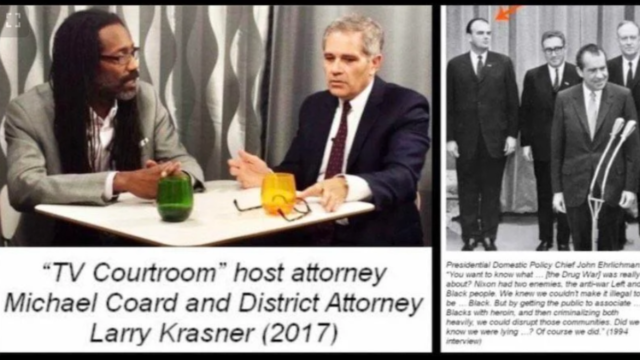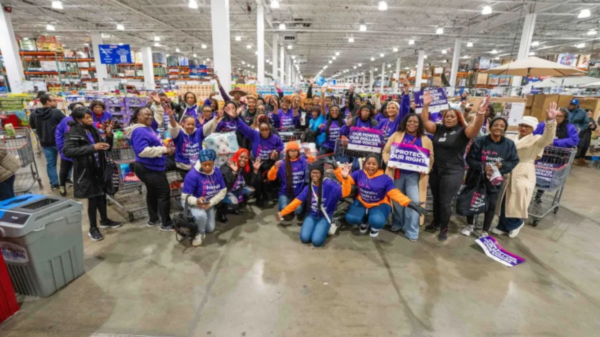
By Michael Coard
Just a few days ago on Juneteenth, Philadelphia District Attorney Larry Krasner held a major press conference (featuring several legal justice advocates including yours truly) at the site of the old Eastern State Penitentiary to announce his office’s “Racial Injustice Report: Disparities in Philadelphia’s Criminal Courts from 2015-2022.”
He chose that date because of its historic significance toward the liberation of Black people in America.
He chose that location because Eastern State Penitentiary – which operated from 1829-1971 and once was the most famous and most expensive prison in the world – still symbolizes the racism and classism of mass incarceration.
And speaking of 1971, it was during that very same year that President Richard Nixon implemented his so-called “War on Drugs,” which, as his Domestic Policy Chief John Ehrlichman admitted 23 years later in 1994, was designed primarily to criminalize and incarcerate Black people.
But neither 1971 nor 1829 was the beginning of racist mass incarceration and other racist legislative, judicial or executive branch bondage in this country.
The beginning was Aug. 25, 1619 in the Virginia Colony at Old Point Comfort with the birth of slavery in British Colonial America. Fast forward to 1684 when slavery began in Pennsylvania.
History proves that slavery is tied directly to racist policing and racist mass incarceration. In fact, municipal police departments, as they are now known, began as “slave patrols.” The first official one started in 1704 in the Colony of Carolina and then spread throughout the South until 1865. As documented by Western Michigan University history professor Sally Hadden in her book entitled “Slave Patrols: Law and Violence in Virginia and the Carolinas,” the laws creating those patrols deputized civilian white men to engage in the “monitoring … [of] rigid pass requirements for Blacks …, breaking up large gatherings … of Blacks, … searching ‘slave’ quarters randomly, [and] inflicting impromptu punishments ….”
And I hope you don’t think racist mass incarceration and bondage ended in 1865 with the passage of the 13th Amendment. It didn’t and that’s because that amendment reads verbatim, “Neither slavery nor involuntary servitude, except as a punishment for crime whereof the party shall have been duly convicted, shall exist within the United States ….” That means slavery and involuntary servitude SHALL exist within the United States. In other words, instead of allowing enslavement and involuntary servitude of people simply because they were Black, the 13th Amendment allowed — and still allows — the enslavement and involuntary servitude of people simply because of “racistly” created, “racistly” targeted, and “racistly” enforced criminal laws. Those laws, known as Black Codes, were passed beginning in 1865 and up to the early 1960s for the sole purpose of legalizing the criminalization and mass incarceration of recently “freed” Blacks along with their descendants and doing so in a manner consistent with the tricky language of the 13th Amendment.
That tricky language in the 13th Amendment is the result of the compromise of the victorious slavery-opposing patriotic North that allowed the defeated slavery-loving traitorous South to co-author the amendment. And those co-authors in Congress incredibly included the former Confederate Vice President, four former Confederate generals, five former Confederate colonels, six former Confederate cabinet officers, and fifty-eight former Confederate Congress members. That explains everything.
Because the 13th Amendment in 1865 allowed for slavery and involuntary servitude, the South immediately created the Black Codes. Those codes criminalized recently “freed” Blacks by creating and selectively enforcing vagrancy, loitering, curfew and many other arbitrary laws. Oh, by the way, that selective enforcement reminds me of how America treated Black crack addicts in the 1980s and 1990s compared to how America treats white opioid addicts today.
As a result of the tricky language of the 13th Amendment, the Black Codes, and many other race-based and selectively enforced laws, Michelle Alexander, author of “The New Jim Crow,” pointed out in 2011 that “More African-American men are in prison or jail, on probation or parole than were enslaved in 1850 before the Civil War began.”
Krasner understands all of this, which is why he inserted his two-page letter near the beginning of the report by noting that, “This report asks us to face the impact centuries of systemic racism and economic inequality in Philadelphia have had on our criminal justice system. It puts numbers to a problem. It is a starting point for all people of good will to think together and work together to defeat racism in criminal justice.”
And he ends that letter by declaring, “We wrote this report because we can’t fix what we don’t measure. The reform movement requires all of us to look critically at trends that disproportionately impact individuals across racial, ethnic, and cultural groups with a commitment to ensuring justice through evidence-based policy implementation and evaluation …. Advancing racial justice is among the most important goals of the movement to reform the criminal legal system. Minimal progress has been made on this front, and it will take a massive, collaborative effort in society and among criminal justice actors to end the racist outcomes in the criminal justice system. Putting numbers to the problem are a first step.”
This is precisely why his report, which analyzed 290,000 cases, includes, in pertinent part, the following three of seven “Key Takeaways:”
1. “… [R]acial disparities observed in Philadelphia’s criminal court system are rooted in severe historical injustices and wealth inequality. For over a century, Black Philadelphians have been over-represented in arrests and criminal charges …. Disparities have not been resolved and in many cases have been worsened by federal, state, and local laws and policies.”
2. In regard to certain records and charges, “Black and Latinx individuals who are convicted of aggravated assault or burglary are more likely to be sentenced to incarceration than white individuals convicted of the same crime.”
3. “While this [DA] administration’s policies have helped to reduce disparities in supervision and probationary sentences, large racial disproportionalities remain in Philadelphia’s court system.”
The entire impressive 66-page report can be read at phillyda.org.
By the way, Krasner’s office isn’t the only knowledgeable entity that sees an urgent need for reform in Philadelphia’s so-called criminal justice system. Back in 2019, the Center for Urban and Racial Equity (CURE), a prestigious diversity, equity and inclusion research organization based in Washington, D.C., released a racially explosive study entitled “First Judicial District of Pennsylvania Equity Organizational Assessment Report” that concluded the following:
• Philadelphia’s court system is immersed in “racial tension.”
• Among some white judges and white court staff, there is a “troubling pattern of racial resentment.”
• Some white judges do not believe “that institutional and structural racism [even] exists.”
So, yes, Krasner’s on the right track. And he needs the assistance of “people of good will” to address and resolve the racist and classist problems his office uncovered internally and exposed publicly.
To those who say Black people like me who always support initiatives like Krasner’s racial injustice report are guilty of always playing the “race card,” I ask them the following question: “If tomorrow — all things being equal in terms of income, education, employment, residence, religion, height, weight, clothing, etc. — you had to go to trial as a defendant in a criminal case in Philly and could choose to go as a Black defendant or a white defendant, which would you chose?”
Your honest answer explains precisely why Krasner’s report is a big step toward real reform in the so-called criminal justice system.









